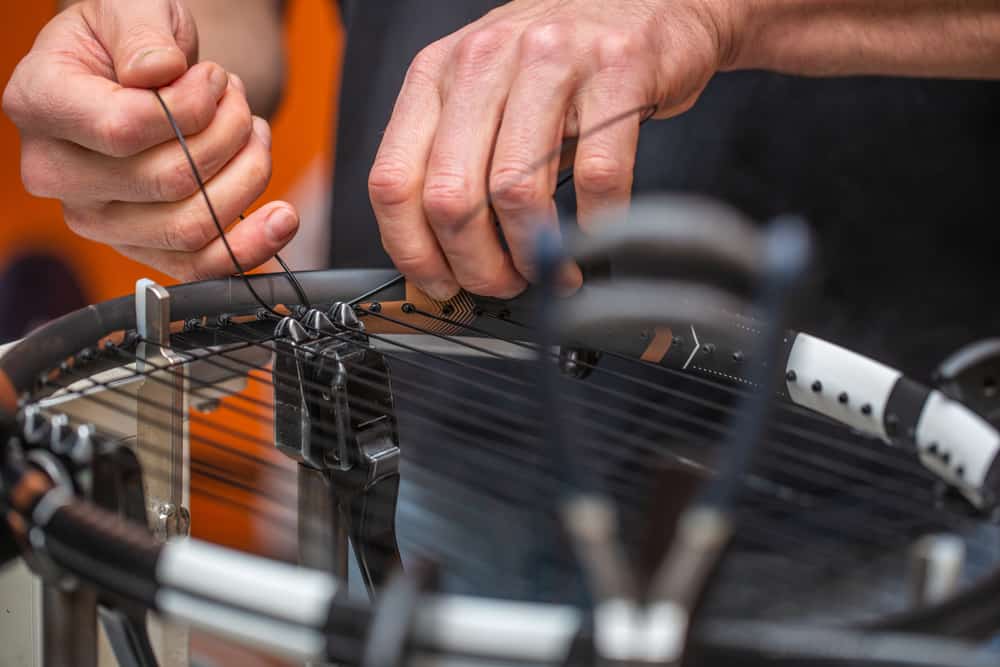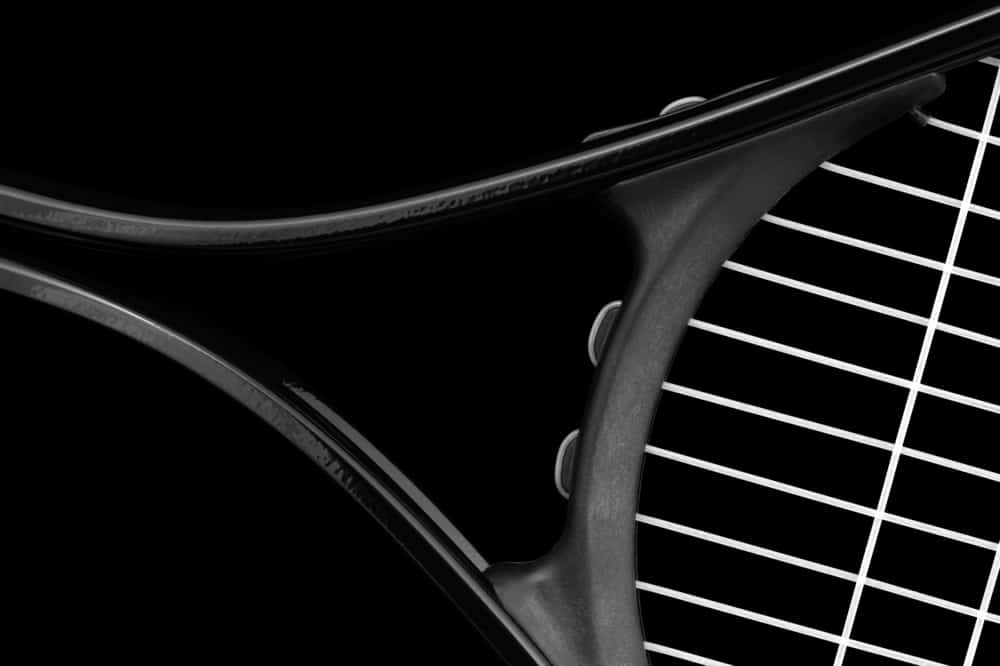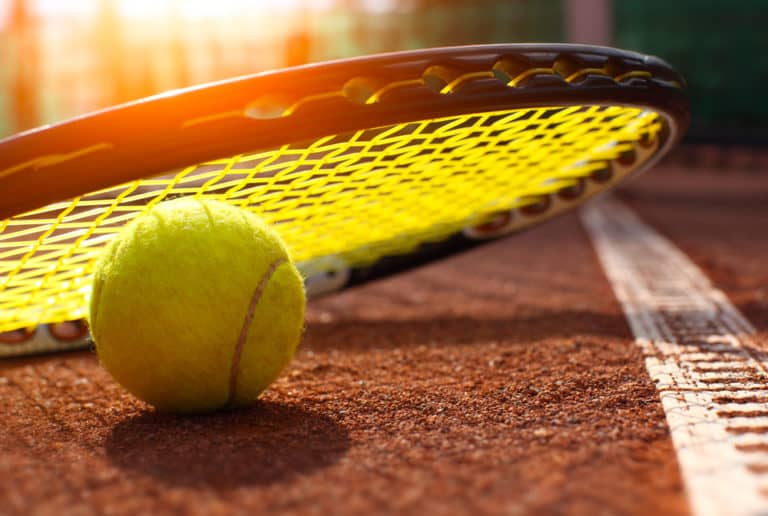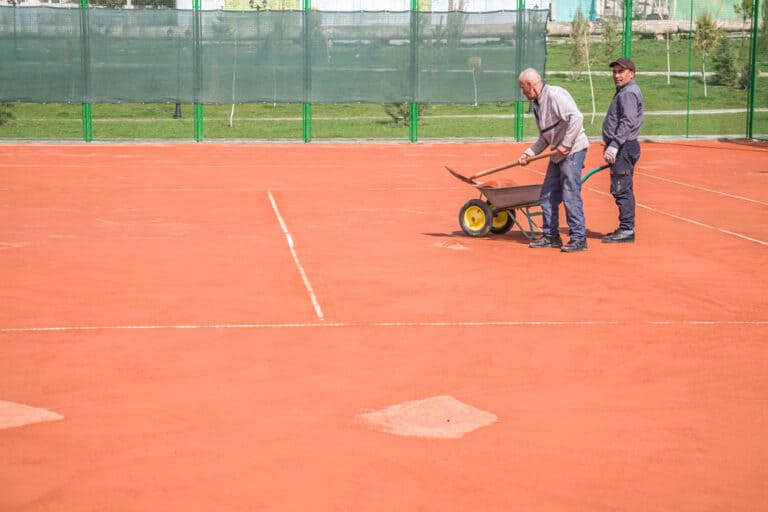Do Tighter Tennis Strings Give More Power?
String tension plays a vital part in ensuring that you get the most out of your tennis racket. Constantly having to restring your racket is part of the game, and deciding which tension works best for you will take a while. Do tighter strings give more power? Do lower tension strings give more control? Let’s find the answer to these questions.
The pressure at which strings are attached to a racket’s frame is called string tension and is executed in lbs./kg. Tighter tennis strings fall in the 50 to 70lbs. range and will give the player more control. A looser string will result in more power, typically found between 40 to 50lbs.
Most advanced and professional players will string their rackets between 50 to 60lbs, as this is the range where control lives. Beginners, juniors, and new players will be advised to string lower for more power until they can generate their own. When you can generate power, then stringing a racket to help control that power becomes essential.
Do Tighter Tennis Strings Give More Power?
If you are a tennis player yourself, you would automatically know the answer to be no. Tighter tennis strings will give the user more control. Low-tension tennis strings give you more power. The whole tennis fraternity generally accepts the above rule of thumb.
Low Tension Strings Equal More Power
Racket strings strung on the lower end of the tension range will provide more power to the user, thanks to what coaches and stringers call the “trampoline effect.” When you hit a tennis ball, its impact will cause your strings to stretch and deform, storing energy in the strings.
This energy is returned to the ball as it rebounds off the racket. Think about the effects of a tight trampoline and one that is looser – you will get more elevation on the loose trampoline. Tennis strings with lower-end tension will stretch more, store more energy, and catapult the ball from your racket with more power.
If your game lacks power, stringing your racket with a lower tension could solve the problem. Choosing lower tension strings will impact the control you have on the ball.
High Tension Strings Equal More Control
The racket strings will move around when you hit a tennis ball; how much they move depends on the string tension.
The strings on a tightly strung racket move less than on a loosely strung racket, resulting in less power but ultimately better control of the ball’s direction and speed.
Most professional and advanced recreational tennis players prefer a tighter string setup, as they have no problem generating power themselves by way of their racket speed and swing.
Tennis String Tension Options
Tennis string tension options range from 40 to 70lbs, with 40lbs being a super low-tension and 70lbs the highest (“Pistol Pete” Sampras strung his rackets at this tension.) Most tennis players string their rackets within the low and high extremes (50 to 60lbs. is a very popular range.)
String Tension Range That Provides More Power
When looking for more power from your strings, you should look at stringing them between the 40 to 50lbs range.
String Tension Range That Provides More Control
If you are comfortable with your ability to generate enough power through your swing and racket speed, more control is what you should be looking for in your strings. Strings that are strung between 50 to 60lbs are for the players who want more control.
I prefer to string my rackets between 53 to 58lbs, as this is the range where I feel most comfortable regarding power and control as a combination.
You need to realize that your strings will lose tension the more you play, and stringing it at 50lb will soon result in a looser tension – more power and less control.
What Type Of Player Benefits From Tighter Tennis Strings?
Intermediate players with well-developed functioning groundstrokes that can generate enough power by themselves will benefit from tighter strings’ extra control.
Players who play at an advanced level prefer a tighter string setup, and so do most professional players. Players who play a fast-swinging aggressive game of tennis, using lots of topspin on their shots, will benefit much more from a tighter string setup than a loose one.
A good example of a professional player who used tight strings was Andy Roddick, who played with strings strung at over 70 lbs. Roddick certainly possessed enough power in his serve and groundstrokes; he was after more control, hence the high tension.
Can you imagine Roddick playing with low-tension strings? The balls would be flying off the court in every direction, as the power of his game would be amplified too much by the “trampoline” springs.
What Type Of Player Benefits From Low Tension Tennis Strings?
Young players (junior level) and beginners can benefit from stringing their rackets at a lower tension as they will lack power at first. Also, players who struggle to generate pace and power themselves through their swing mechanics.
Also, beginners and younger players tend to hit many balls off-center while figuring out the game. A loosely strung racket with a soft and forgiving swing bed offers the beginners a better chance of producing a reasonably good shot (with enough power) without swinging too hard or middling it perfectly.
Different Types Of Tennis Strings
There are different types of strings to choose from when stringing your racket:
- Natural Gut: The most expensive strings on the market (made from cow intestines called serous membrane/serosa. Natural gut is the preferred string of many players on the ATP Tour due to its excellent feel. It’s also the most expensive string on the market.
- Nylon (Multifilament): Awesome all-around alternative to natural gut, used by most non-professional players, and an affordable option to boot.
- Synthetic Gut: Offers a middle ground between the softness of a natural gut string and the firmness of a polyester.
- Polyester (monofilament): Ideal for stronger players who hit the ball hard and players who don’t suffer from lingering arm injuries. Players who often break strings will find that polyester holds up better but will provide less feel and power than a gut or nylon string.
- Hybrid: This setup is when you use two types of strings on your racket to get the best of what each string type offers. Players normally go for a very durable endurance type string as the main strings (polyester) and a softer string for the cross strings (natural gut.)
Rodger Federer prefers a hybrid string setup of the following:
- Wilson Natural Gut for the main strings, at 60lbs.
- Luxilon ALU Power Rough for his cross strings, at 56lbs.

How Frequently Should You Restring Your Racket?
Have you thought about how often you should restring your racket? Or do you play until your strings snap before being forced to restring your racket?
According to Wilson, you should use the following rule of thumb; “Restring your tennis racket as many times a year as you play in one week.” Here is a helpful guide in knowing when it’s time to put some new strings on your racket, according to how much you play:
Playing Once A Month – Beginner Level
A beginner is a player at the beginning of their tennis journey, maybe taking a private lesson once a month or indulging in a few hitting sessions a month. If you fall into this very casual beginner stage, then a restring every three months would be ideal.
You probably won’t be snapping strings at this stage. However, you will notice that your strings are “behaving” dramatically compared to when your racket was newly strung. Your racket strings start to lose tension (whether strung tightly or loosely) when it leaves the stringing machine.
Soon enough, you will be learning with a string tension that isn’t the same as in the beginning, which can be off-putting as you need to adapt to how your “older” strings are hitting the ball.
If you restring your racket every three months, your string tension will be the same constantly, which will help you figure out your game in the beginning stages.
Playing 3 to 4 Times A Month – Intermediate Level
An intermediate player plays at least once a week, maybe a little more in some weeks, and someone who’s starting to enter leagues and tournaments.
It’s recommended that these players restring their rackets at least once every two months, every month if possible, depending on the quality of your string setup.
When you start to compete, you want to keep your string tension at a specific level to which you’re accustomed. Remember to ask your racket stringer for the best string options according to your specific game.
Popular strings when playing at an intermediate level:
- Wilson NXT
- Wilson DUO Feel
- Babolat RPM Blast Tennis Strings
- Solinco Heaven Strings Hyper-G
- Luxilon Big Banger Alu Power Tennis Strings
Playing 4 to 7 Times A Week – Advanced Level
An advanced player is training full-time, 4 to 7 days per week. For an advanced player, who uses their rackets daily and hits for 2 to 4 hours per training session, the best advice is to restring when you snap a string.
If you are due to play in an important tournament, restringing all your rackets before the tournament commences. When you’re playing at an advanced level, Wilson suggests buying reels of string instead of individual sets, saving you money in the long run.
A reel of string usually restrings a racket 18 times. Here are some cost-efficient options:
- For Juniors: Wilson NXT Power
- For College Players: Wilson NXT Control
- A durable polyester option: Luxilon 4G
- String used by 60% of Top 100 players: Luxilon ALU Power
Conclusion
Higher tension strings give the user more control to go with the player’s own power, whereas looser strung strings will give the player more power but with less control. The trick for all of us is finding the correct tennis string tension to suit our style of play and help us improve on the court.
References
- https://www.perfect-tennis.com/hybrid-stringing/
- https://www.usta.com/en/home/improve/gear-up/national/stringing-for-better-control.html#:~:text=Generally%20speaking%2C%20the%20tennis%20axiom,the%20tension%2C%20the%20more%20power.
- https://www.wilson.com/en-us/blog/tennis/how-tos/how-often-should-i-re-string-my-tennis-racket
- https://www.iptlworld.com/best-tennis-strings-for-intermediate-player/
- https://www.tennis-point.com/m/tennis-string-buying-guide/a/tennisstringbuyingguide/







